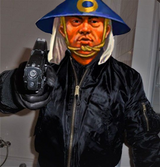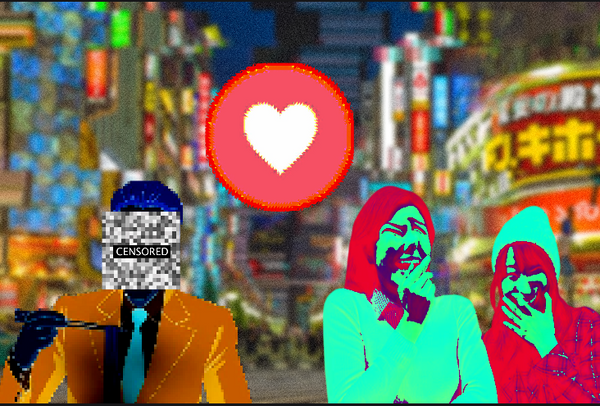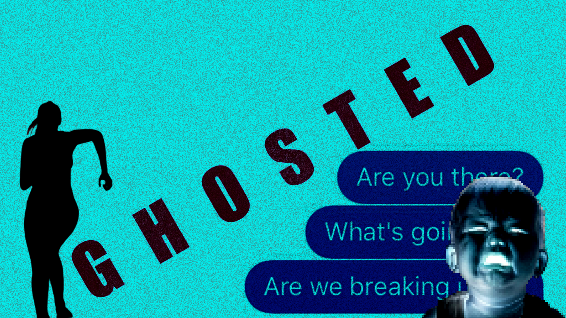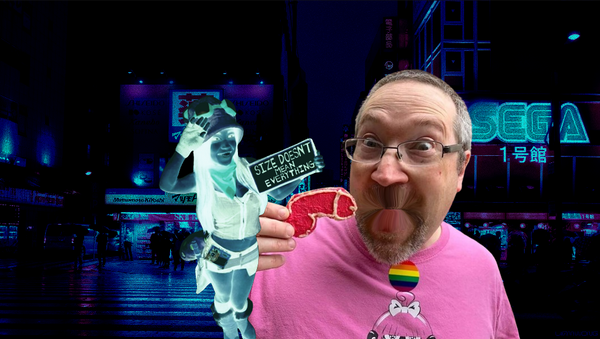What Is Irezumi? — The Meaning Behind Japanese Tattoos
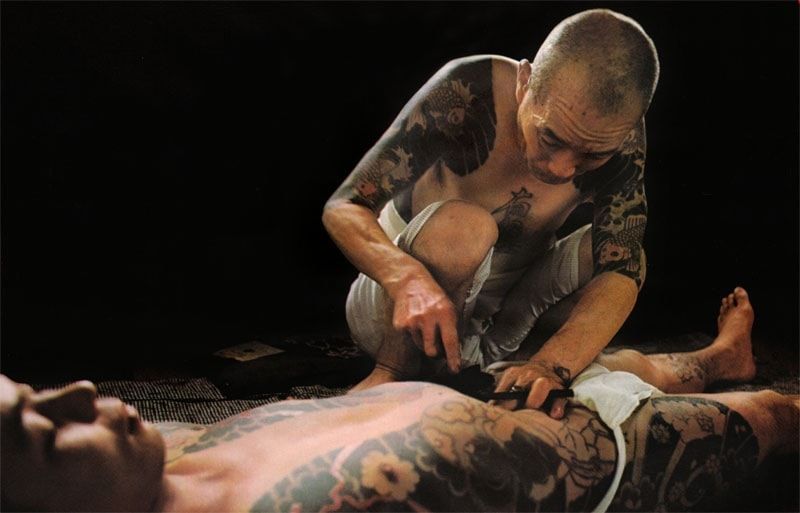
Although everyone seems to know of them, not much is known about the Yakuza's greatest connection, Tattoos. Nowadays, the general public has become more accepting of tattoos, in general. Gone are the days when tattooed people were shunned by society, but apparently, Japan hasn’t gotten the memo yet.
What is Irezumi you ask? The common term for Japanese tattoo art is irezumi (入れ墨), meaning to insert ink. This refers to the Japanese tattooing tradition of inserting ink beneath the skin to form the tattoo. Irezumi tattoos derive inspiration from Japanese folklore and mysticism. The most common tattoos are Koi Fish, Samurai, Dragons, and Oni.
Read on to learn more about the different traditional irezumi tattoo designs and the specific meanings attached to each of them.

The History Of Irezumi
Yakuza organizations go way back to the Edo period (1603–1868). Though history and diversification have modified what it means to be a Yakuza member. They are primarily made up of the people who are from the lowest classes in society, from the Tekiya (peddlers of stolen, smuggled, or illegal goods) who started it all during the ancient times, to the Bakuto (gamblers), up until the misfits and hoodlums of the more modern ages.
In the beginning, tattoos weren’t really a thing in the Yakuza world yet because they were associated with illegal foreigners or criminals, who were tattooed to mark them for life and make their lawless history (or non-Japanese status) known to all.
With many of them being criminals themselves, the Yakuza gradually turned this notion on its head and turned tattoos into badges of honor to take pride in. As time went by, they increased in popularity and influence. Several different factions sprung up and soon enough, the atmosphere became pretty competitive.
Similar to the gang tattoos of today, their ink became a means to identify their allegiances and the crimes they’ve committed. As we all know, getting a tattoo can be very painful. To make matters worse, Yakuza tattoos are done the old-fashioned way in a process called Irezumi (入れ墨), which means ‘inserting ink’. It’s done manually without the use of anything but a bamboo stick with a sharp needle attached to the end of it.
Sitting through one of these sessions must have required a high tolerance to pain because the designs are usually opaque, involving a lot of spaces that are completely filled in with solid color.
Imagine being poked with a small needle again and again, and not being allowed to flinch, lest the tattoo be ruined. Now, imagine having your full body done, and being inked from your shoulders to your ankles. Ouch! The tough and manly aspect was another thing that drew them in to the whole culture, and it was very time consuming too.
They say a full bodysuit, when done in weekly sessions, can take anywhere from 1-5 years, depending on how detailed it is. That’s practically a college degree! It’s probably going to cost like one too. We all know that time means money, and being able to afford a bodysuit was also seen as a sign of success and accomplishment.
Given the taboo nature of their profession, Irezumi artists were also ostracized and had to rely on word of mouth of previous customers. This must’ve been a tough gig in an era before wireless communication and online reviews.
It can make quite an interesting job, though, because there’s so much more to it than picking a design from a catalog and transferring it onto someone’s skin. Most older Yakuza even dislike calling them ‘tattoos’ because they feel like it has a shallow connotation like they’re merely done because they’re trendy.
Irezumi tattoos are extremely personal and although they might have popular themes, it’s practically impossible to have two individuals with the exact same design. Artists dig deep into the history of their clients and include stages in life well before being part of the Yakuza.
The tradition in itself, when viewed separately from the violent and skewed beliefs of the Yakuza, is undoubtedly an awe-inspiring art form that is filled with depth and meaning.

The Specifics Of Irezumi
Traditionally, the entire body aside from the head, neck, hands, feet, and an approximately 3-inch wide vertical line down the torso is tattooed in a Munewari Sōshinbori or bodysuit fashion. Extremities are left blank so that the person can conceal his tattoos with a long-sleeved shirt and trousers. Now, you may be wondering what the vertical gap down the torso is for. It’s actually done so they can unbutton their shirts without exposing any ink. Ain’t that crafty?
It’s sort of amazing to think that a person so heavily-tattooed can look so inconspicuous and live a ‘regular’ life alongside the unknowing tattoo-phobic public. Take note that by no means are they ashamed of their tattoos, on the flip side, they hold these road maps of their lives to such high regard that only those closest to them can look at them.
If you had your entire life documented on your skin, you would naturally want to maintain some level of privacy and only show it to people who matter to you.
Inner arms and or underarms were often left blank for two primary reasons. First, the skin around that area is one of the most tender and sensitive, therefore the most painful place to get a tattoo. It’s also dangerous and prone to infection because of the irritation around the sweat glands. Try pinching yourself a couple of times around that area to see for yourself how sensitive it is.
Second, criminals were tattooed in their inner arms as the aforementioned method of identifying them and casting them out of society. People left the area blank to show others that they got tattoos on their own free will and not because they wanted to cover up a tattoo they got in prison.
If a design only has the linework done, meaning it hasn’t been filled in with color yet, it’s actually meant to be that way for now. This practice is called Sujibori and it’s unfinished precisely because the narrative behind the tattoo hasn’t been fully realized yet.
Red tattoos were the manlier choice. In earlier days, black and red were practically the only color options available, but red was especially macho because it contained toxic substances. Not the brightest idea unless you think infections are cool. Nowadays, this doesn’t really hold true anymore because pigments are more regulated, and tattooing practices have changed very much since then.
There are many different motifs and themes that make up what Japanese tattoos are all about. These themes include religion, folklore, and natural beauty. Although there are over a thousand different variations, here’s a list of some of the most popular designs people go with, and their meaning.

Traditional Japanese Tattoo Meanings
There are many different motifs and themes that make up what Japanese tattoos are all about. These themes include religion, folklore, and natural beauty. Although there are over a thousand different variations, here’s a list of some of the most popular designs people go with, and their meaning.




Dragon (龍; Ryu)
I think it’s safe to say that dragons are considered cool in every country, but they actually aren’t cool in Japan. Just kidding. They are beloved and revered mythical creatures who are all-powerful creatures that fuse together the forces of a serpent’s flexible body, the koi’s hard-wearing scales, the eagle’s formidable claws, and the mighty deer’s horns. With all this strength, they aren’t portrayed as savage beasts, but as wise protectors of humanity.
Dragon tattoos are seen more like companions to protect the person against evil spirits and evil people. They are usually done in black, but can come in a variety of colors—green (natural), blue (gentle and forgiving), yellow (nobility), and gold (righteousness). Japanese dragons have three claws, most of the time, unlike Chinese ones that have four or five.
Originating from the Edo Period, firefighters most commonly had these tattoos as they thought it protected them from fire. The firefighters of the Edo Period were a very tough group and shared similarities with the Yakuza lifestyle.



Koi Fish (錦鯉; Nishikigoi)
Koi, short for Nishikigoi, is a species of carp that is prized, first and foremost, for its exquisite patterns. They’re believed to bring prosperity and good fortune, so households often have them as pets. But more than being physical beauty, they are very strong and resilient creatures who are able to swim upstream through rough currents. Legend has it that they’re even able to swim up waterfalls. Chinese folklore even speak of koi that transform into dragons! Doesn’t it remind you of how Magikarp evolves into Gyarados? Oddly enough, you can learn so much about Japanese culture from Pokémon.
This King of the River Fish is a popular motif because it represents having the strength to get through adversity, and if you think about it, Yakuza members have most probably gone through at least one rough patch in their lives due to poverty, even before being part of the Yakuza.
Tattoos are usually done in black, but having a red one can stand for strong brotherly love for one’s faction too. The koi is usually oriented in an upward or ascending position and is accompanied by waves, as water connotes resilience and the wave of life.



Snake (蛇; Hebi)
While being called a snake is never a good thing, the Japanese also see snakes as very wise creatures. Much of this is influenced by Chinese beliefs, which is a common theme in almost all of the motifs in this list. The Chinese zodiac says that people born in the year of the snake are highly intellectual and philosophical. Additionally, because snakes periodically shed their skin, they also denote healing, regeneration, good health and even immortality.

Phoenix (不死鳥; fushichou)
Another popular tattoo would be the phoenix who rises from the ashes in an eternal cycle. Similar to its symbolism in western countries, (although it was the Chinese who brought this idea to them) it is associated with rebirth, reawakening, and new beginnings. Its alternate name, fushichou literally translates to ‘The Immortal Bird’.







The Gods of Fortune (七福神; shichifukujin)
- Ebisu or Yebisu (恵比須): The God of Fishing, Shipping and Commerce (Honesty)
- Daikokuten (大黒天): The God of Wealth and Prosperity (Fortune)
- Bishamonten (毘沙門天): The God of Warriors (not war) and the Defense Against Evil (Dignity)
- Fukurokuju (福禄寿): The God of Wealth, Happiness, and Longevity (Longevity)
- Jurōjin (寿老人): God of Wisdom (Wisdom); Not to be confused with Fukurokuju, who looks similar, Jurōjin is always accompanied by a black deer
- Benzaiten (弁財天): The Goddess of Arts and Knowledge (Joy)
- Hotei or Budai (布袋): The God of Happiness and Abundance (Happiness); He’s said to be based on a Chinese hermit named Bu Dai Shi and is also known elsewhere as ‘The Laughing Buddha’
Despite the contrasting violent practices of the Yakuza, Religious imagery is often depicted in their tattoos with the hope that the virtues these deities embody somehow rub off on them.
They also serve as a justification of sorts of their philosophies because they believe themselves to be men of righteousness and chivalry. Unlike Catholicism, deities may be accompanied with flames, as these signify purification and cleansing from evil spirits.

Kintarō (金太郎; ‘Golden Boy’)
This ‘golden boy’ was named this way more for his superhuman strength than the color of his skin. The stuff of legend, Kintarō was said to actually have truly existed during the Heian Period (794 - 1185), smashing rocks, bending and uprooting trees, wrestling bears, and battling demons from a very young age.
He was also believed to have been the guardian of a samurai named Minamoto no Yorimitsu later on in his life. He is often rendered with red skin and wrestling a giant black koi.
Kintaro is chosen as a tattoo to either impart his legendary strength to the person or serve as a guardian, as he did to the samurai.

Samurai (侍)
Although Samurais used to be adversaries of the Yakuza because the former lived a virtuous life, while the latter chose the life of crime, Samurais have become a popular tattoo choice among the Yakuza because they believe that they embody the way of the warrior (武士道; Bushido) and its 8 virtues of righteousness (義; gi), heroic courage (勇; yū), benevolence / compassion (仁; jin), respect (礼; rei), honesty (誠; makoto), honor (名誉; meiyo), duty / loyalty (忠義; chūgi), and self-control (自制; jisei).
All this can sound pretty ironic, but another reason for this could be because some Samurais actually became Yakuza and wanted to acknowledge their prestigious past.

Geisha (芸者)
Geisha are ancient Japanese performers who are highly-skilled in dancing, singing, and the arts. Not to be mistaken for prostitutes as they often are outside Japan, tattoos of these alluring entertainers embody fertility, good fortune, and tradition.

Cherry Blossom (桜; Sakura)
While flowers—and pink cherry blossoms, for that matter—may not seem like a good fit for a mafia that gives high regard to machismo, they’ve actually assigned a beautiful meaning to this equally beautiful flower. It stands for the fleeting nature of life. They are colorful and magnificent in full bloom, but wither away in a moment and are swept by the wind. Indeed, life is short and probably more so for the Yakuza.

Maple Leaf (紅葉; Momiji)
Needless to say, the Yakuza lead a very dangerous lifestyle and being constantly faced with death can make someone contemplate about life on a much deeper level. When talking about representations of the passage of time and the cycle of life, leaves are pretty much universal. Maple leaves are especially beautiful leaves that are plentiful in Japan and are often depicted being carried away by a gentle breeze or stream, similar to Cherry Blossoms.

Lotus (蓮; Hasu)
The lotus is deeply-tied to the Buddhist symbolism about the hardships one has to undergo in life in order to live it fully and meaningfully. Just like the wise Drake once said: ‘Started from the bottom, now we’re here’, lotuses begin their seedling lives under the mud and gradually grow upwards and blossom into immaculate flowers that float on the surface of the pond.
It’s incredible how something that literally came from sludge can look so pure. Lotuses epitomize the struggle towards spiritual awakening and the journey of most Yakuza from the fringes of society.

Chrysanthemum (菊; Kiku)
The Chrysanthemum is a symbol of the imperial family of Japan. This flower was assigned its royal status because its numerous petals that spread out resemble the sun. As a descendant of the sun-goddess, Amaterasu (天照), the emperor represents the middle of the flower, as he is the center of the country.
To add to that, they are also closely-associated with longevity and joy because they look like the sun. Yakuza don’t usually have Chrysanthemums on their own and choose them alongside dragons or phoenixes to balance out the tattoo and fill out larger spaces like the back or torso.

Peony (牡丹; Botan)
If there were a flower that could stand for reckless, macho, manliness, it would be none other than the King of Flowers in Japan, Peony. Gangster florals. Who would’ve thought? The reason a Yakuza might choose to have Peony grafted onto their skin, is that it shows wealth, elegance, prosperity, and good fortune, while also keeping the traditional style and code that a member may follow. Others may also consider this a symbol that suggests a daring and all or nothing attitude. Something that definitely fits the typical personality type of an average Yakuza.

Foo Dog (狛犬; Komainu )
If you’re confused about the Foo Dogs and think they look more like lions, that’s because they are lions. They’re known (more accurately) as the Lions of Buddha and the guardians of Buddhist temples. They probably look familiar too because you usually find two of them on either side of a temple’s entrance. They’re also found in mansions and mausoleums as keepers of sacred sanctuaries.
The Yakuza get them as tattoos for more or less the same purpose… for protection against harm and evil—and they often get them in pairs too! Typically, one of them would have its mouth open to ward off evil spirits and the other one would have it closed to safeguard good spirits.

Tiger (虎; Tora)
A tiger is a courageous and fierce beast. Additionally, the Japanese consider it as one of the 4 Elemental Animals (autumn) who is able to control the wind and they believe it can ward away evil spirits, disease, and misfortune.
Interestingly, Japan didn't really have any tigers and only knew about them from Chinese art. So I guess you can say that they had quite a folkloric reputation in the olden days.

Skull (頭蓋骨; Zugaikotsu)
Rather than a darker, more macabre vibe that you’d expect, just because you would think that they would choose this design to project a macho, gangster image (which is at times, the case), the symbolism behind the skull design is quite the opposite. It alludes to death as a part of the cycle of life and as a tribute to pay respect towards one’s ancestors. Don’t you think that it’s refreshing to discover this new way of seeing such a ubiquitous symbol in a different light.

Oni Mask (鬼)
Personally, I don’t think Oni masks are the best tattoos to have just because their bulging eyes and aggressive expression can be a shocking thing to see on a mirror when you wake up in the morning. Well, maybe that’s part of why its chosen in the first place. An Oni is a fierce-looking demon or ogre with horns, fangs, and tusks.
They consume human flesh and spread death and disease. Aside from the part about eating human flesh, doesn’t this sound a lot like what a Yakuza would do? Oni are also said to be reincarnations of really bad people, so that also goes in line with the image they want to project.
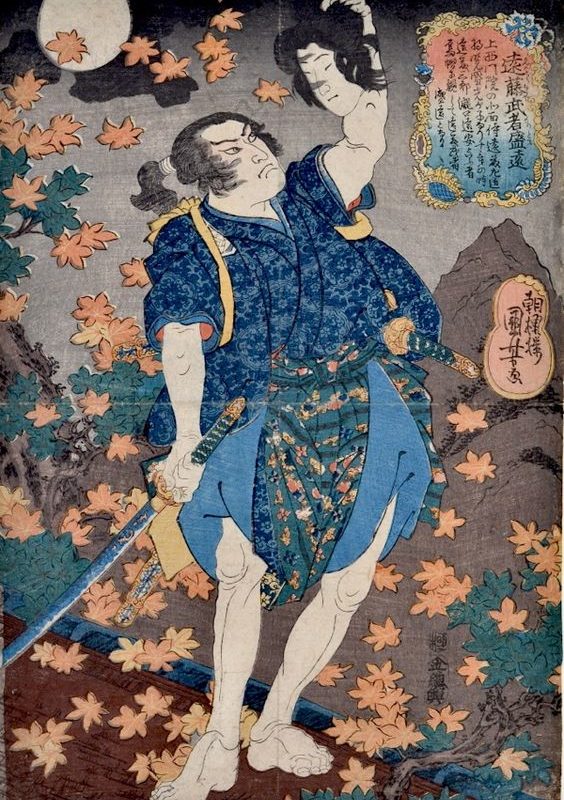
Head (生首; Namakubi)
I thought I’d save the best for last, if you could call it that, and end things with a bang or a chop because we’ll be ending with severed heads. Gore and barbarism aside, there’s actually more to it than being a creepy tattoo to freak people out. It’s a nod to the samurai practice of headhunting and symbolizes fearlessness.
I mean, you’d have to be really brave to have something like this inked on your body where you’ll be seeing it all the time. Just when you thought the Oni Masks were shocking enough. Interestingly, it also conveys respect for a foe. I guess there really is honor among thieves? Of course, it’s also meant to scare people away. Anyone with a good head on his shoulders would most certainly keep his distance from a person with a tattoo of a severed head!

Are You Irezumi Ready?
Tattoos are a beautiful subject matter anywhere in the world, and Japan is no exception to this. The colorful history of Japanese tattoo culture, and the fact that it is so secretive and taboo, certainly add to its mysterious appeal.
Before you decide to get that sweet new Japanese dragon tattoo you thought you always wanted, perhaps consider all the other additional designs and motifs that you have to chose from that fit into the 'Japanese' category of tattoo you want.

